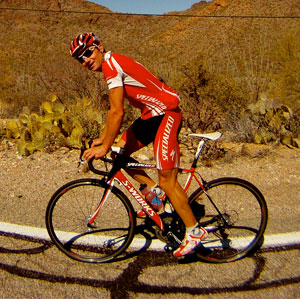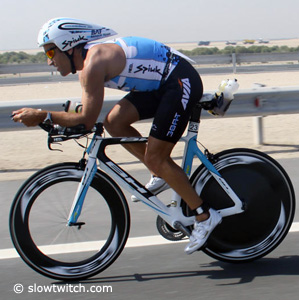223 Arabian Kilometers
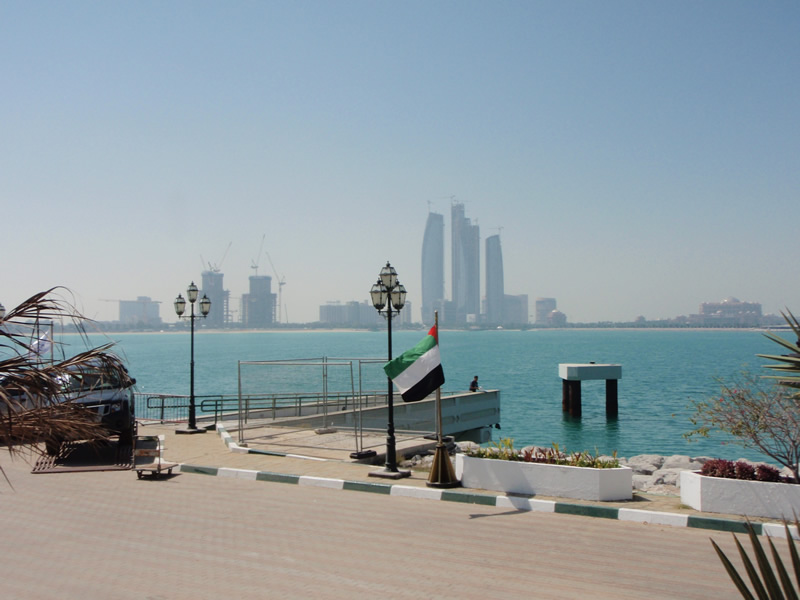
One thing about a 16-hour flight is that you find yourself with a lot of free time. And I thought it an apropos time to write about why exactly I would subject myself to the better part of a day in a small seat surrounded by numerous crying infants. It was just under (one day, to be precise) a year ago that I found myself in the exact same situation, on EK-218, the direct flight from LAX to DXB; the only direct flight into the United Arab Emirates from California is on Emirates, which as the national airline of Dubai flies only into and out of that airport. The Abu Dhabi International Triathlon (ADIT), of course, takes place in Abu Dhabi, whose national airline is Etihad, considered-in what will be become a theme regarding superlatives-the best airline in the world. As good an airline as Etihad may be, I had no desire to extend my trip with layovers or an ill-considered route. To get from Dubai is surprisingly easy, at least it is once you actually exit the airport and get on the road to Abu Dhabi, which of course is not actually labeled as such until you are actually outside of Dubai and onto the Sheikh Zayed Highway. I'd wager that close to 50% of everything in the Emirates is named "Sheikh Zayed" X; Sheikh Zayed was the sheikh of Abu Dhabi when oil was discovered in the various Emirates and it was he who played the role of unifier and helped create the United Arab Emirates and then served as its first president. To say he is revered would be an understatement. Sheikh Zayed passed away in 2004, and the sheikh of Abu Dhabi is now his son, Sheikh Khalifa, who is well on his way to claiming the remaining 50% of things not named for his father.
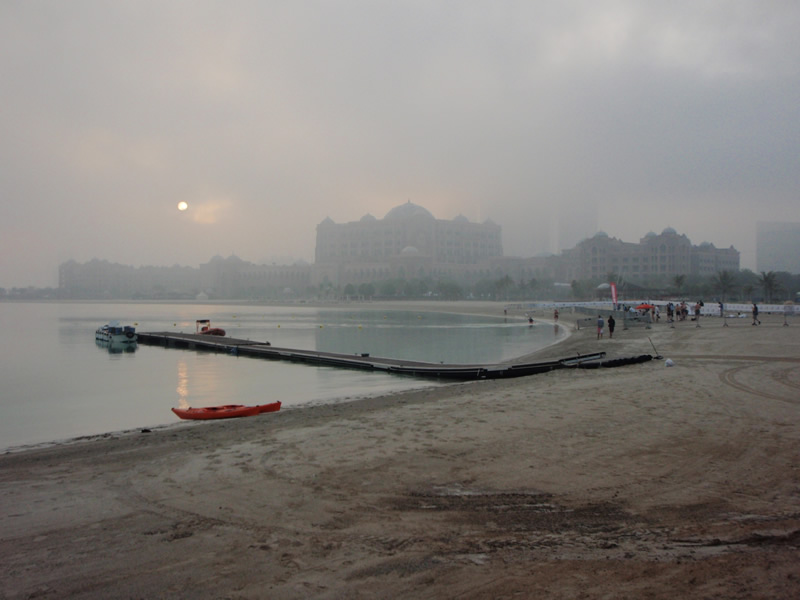
Abu Dhabi sits southwest of Dubai about 80 miles along the coast of the Persian/Arabian Gulf. The UAE itself sits on the southeastern side of the Gulf, next to Saudi Arabia to the west and diametrically opposed, in numerous ways, from Iraq to the northwest across th Gulf. The road between the two-the aforementioned Sheikh Zayed Road-is an incredibly large highway (I at least four, and often five or more lanes each direction) of perfect pavement (it never snows; rarely rains; and is the major road connecting the two most major cities in a country with an absurd amount of money) on which very large Mercedeses and BMWs drive extraordinarily fast. The posted speed limit is 120kmh, but it wasn't until I finally set the cruise control at 150kmh that I was actually even coming close to keeping up with traffic in the slow lane. I was passed on numerous occasions by cars probably doing at least 150mph. It is not surprising that, according to locals, when there is an accident on Sheikh Zayed Road, it tends not to end well. However, this does mean that a relatively long, distance-wise, commute becomes relatively short, time-wise, which is a blessing after you've spent 16hrs on a plane and then another couple of hours walking from your gate to customs in Dubai Airport, the largest in the world; clearing customs; and going through security again, including baggage x-rays and searches, before you are allowed to actually enter the country.
If all of this sounds enormously tedious and not the least bit appealing, you are right. It is enormously tedious and not the least bit appealing. So the obvious question is, then, "Why?" The answer 364 days ago was, quite simply, money. A triathlon with an overly long bike ride, early in the year, and with very good prize money was the sort of thing that would cause me to willingly subject myself to a trip of substantial length. The opportunity to see both Abu Dhabi was somewhat appealing, but at the time, I was strictly motivated by the professional part of being a professional triathlete; the triathlete part of me was intrigued, but if you'd offered this same trip to me to do a race without any money on the line, I would have respectfully declined. And based on the relatively sparse attendance the race had in its first year, it seemed that other folks felt similarly.
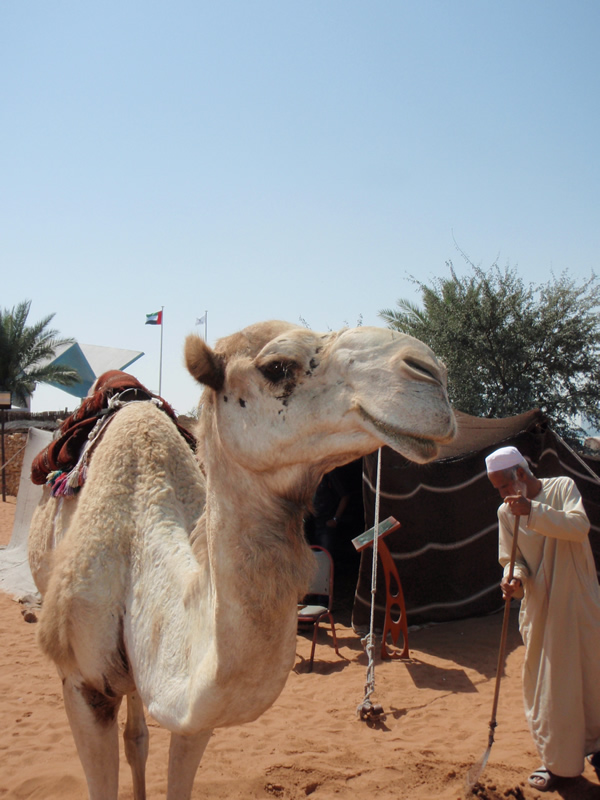
Fast-forward a year, and I find myself making the same trip, but with substantially different motivations. Yes, the prize money is the same, and it's certainly a motivating factor, but unlike last year, I find it to be, at best, secondary. And based on the fact that the age-group race is sold-out this year, it seems that plenty of other folks feel similarly. Now, before you chime in that prize money is a non-factor for age-group athletes, keep in mind that there are many things about the Abu Dhabi Triathlon which are unique, not the least of which is that age-group winners get $1,000 each in prize money; no "inconvenient" USAT prize money rules to deal with here. But, as with myself this year, I'd wager that wasn't the driving factor in getting folks on the starting line. As soon as I crossed the line last year, I was certain that I'd be back. I even considered making the trip again last year for nothing more than training. The enormity of what the ADIT organizing committee achieved is nothing short of astounding.
Let's tally up everyone in the UAE who knows anything about triathlon. It's not a very large number. And the majority, if not the entirety, of that number was entered in the race last year. But without folks who cannot, generally speaking, even grasp the idea of why someone would want to swim, bike, and run for the better part of the day in the desert, whom do you get to run the aid stations? There is, of course, no shortage of laborers in a country which is undergoing massive construction and overhaul seemingly overnight. And while getting those folks to hand out water bottles, sponges, gels, etc. to athletes flying by on the run or bike is not a problem (one thing that's clear in the UAE is that you can pay someone to do pretty much anything); getting it to go smoothly is an entirely different matter. And while there were some minor snafus, such as most of the bottles I got on the bike needing to have the lid really screwed on all the way as opposed to just a quarter-turn and the Gatorade on the run being handed out in small bottles instead of in cups, overall, you never would have guessed that this was a first year race in a country where the very concept of triathlon was essentially totally foreign.
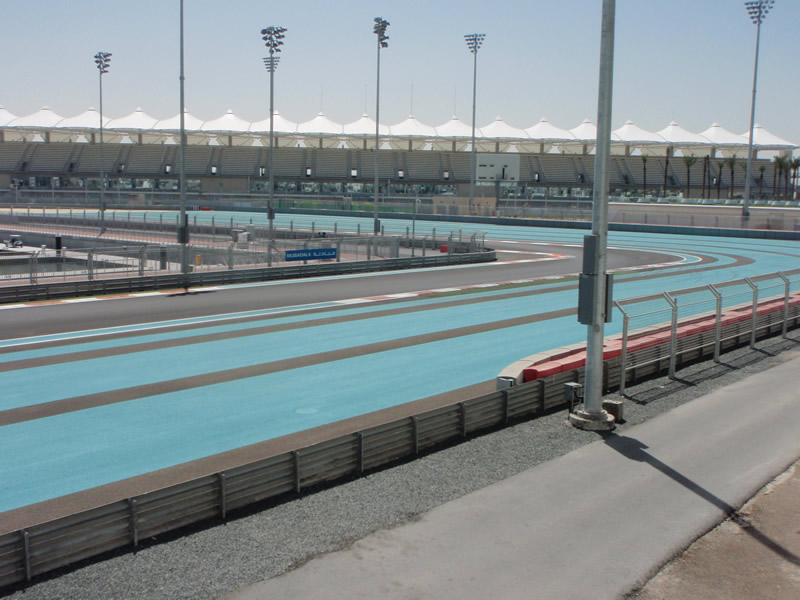
Most of the pros were put up in a very nice hotel last year, but through the magic of Slowtwitch, I was connected through the forum with a wonderful Canadian family who connected me with a wonderful Australian family who hosted me. As a result, I got a lot more information and insights into the local culture, which was fascinating. My favorite part of the whole trip was not the race. It was a trip to the grocery store. And, in particular, to the so-called "forbidden room," where you can buy bacon and other pork products. My second favorite memory was having both a camel-milk and a gold-flake topped (yes, real gold flakes) latte at the Emirate's Palace, the national hotel of Abu Dhabi, where winning the race might mean that you could afford a room. For reference, the Emirates Palace has an ATM that dispenses gold bullion, and it was emptied of it's contents almost immediately by hotel guests and locals. Those are the kind of folks who can stay at the Emirates Palace, though even mere mortals such as myself are allowed to visit and buy gold-encrusted macaroons in the cafe. There's a lot of gold in the hotel. A lot…

The Emirates Palace private beach is the site of the swim start for the race, and it's probably one of the most stunning sites you will ever see at a triathlon. The hotel is georgeous, and it really does make for a surreal backdrop to what was truly a surreal day of racing. The long-course race with its 200km bike course is a two-and-a-half lap affair, the mid-point of each the two complete laps being a trip around the Yas Marina F1 track. As good as the Sheikh Zayed Highway's pavement was, nothing compares to an F1 track. It's nice enough that you almost feel bad riding on it. The run takes place on the corniche that punctuates the downtown, leading from the well-utilized public beach to the tallest (I said it was going to be a theme; the number of tallest/biggest/fastest/most-est things in the UAE is massive.) flagpole in the world. The course itself is entirely flat. The only "hill" is an overpass to take you from Abu Dhabi mainland onto Saadiyhat Island, where the bulk of the bike course winds over yet-undeveloped (though extensively planned for developing) desert and desert marshes. And then onto Yas Island, home of the also named track, which sits next to Ferrari World, the largest indoor theme park in the world with the fastest roller coaster in the world attached to it. Last year, both the temperature and the winds were mild, though both conditions, especially the latter, are not to be counted on reliably. So far, the reports call for similar temperatures but significantly more wind than last year, and on this pancake flat course, there is nowhere to hide from either. The course itself, while scenic in that sort of desolate way, is non-remarkable, though it will be fascinating to see how it changes as Saadiyhat Island grows from a vast expanse of sand into the proclaimed cultural capital of the world with several world class museums designed by the most famous architects of the modern era. It's probably the only race in the world where you could do the same course year after year and have it look remarkably different each time. The Emirates, and Abu Dhabi in particular with its deep oil reserves, are growing and changing at an astonishing rate.
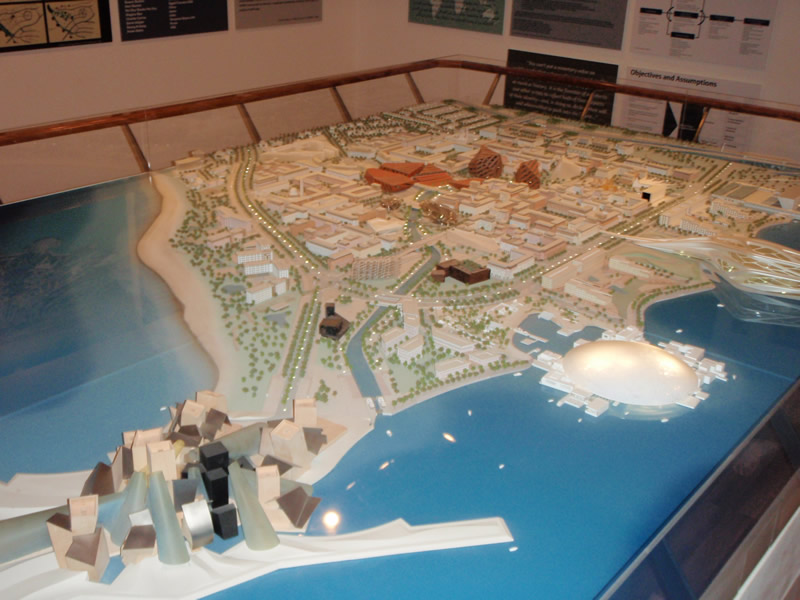
But beyond the chance just to experience a cultural phenomenon, which is enough to perhaps bring people once, or maybe twice, what I think it truly compelling about the race is the community. I only had the chance to meet a few of the candora-clad locals, all of whom were incredibly gracious, but all of the folks I met working there&emdash;from the cab drivers to the servers to the typically friendly triathlon expatriate community&emdash;were as welcoming as I could imagine. Driving is a bit of an adventure — in a not uncommon scenario we saw, while checking in our bikes, a big Mercedes sedan take a roundabout at the sort of speeds you would think were resolved for the Bonneville Salt Flats. And certainly while riding in the city you do need to be especially mindful; I found it useful to simply imagine that every driver behaved the way a 16-year old boy would drive if given an enormous luxury car with a massive engine. But by simply being very defensive, I never found myself in an uncomfortable situation on the road, and drivers were respectful, if occasionally surprised, of me. Bicyclists on the road are not very common. But I took my bike into the true downtown core, and even there, no one ever honked at me or brushed me too close. There are only a handful of pools, and the one we were allowed to swim at had separate days for men and women (one of surprisingly few reminders aside from the several-times daily prayer call that I was in a devoutly Muslim country), so I chose to swim at Al Bateen beach, an approximately 1km stretch of beach along the palace road, where various members of the royal family live in compounds that resemble 1600 Pennsylvannia Ave., not in architecture, but more in overall "aloofness." Running is typically urban, at least where I stayed, though there was a 1.5km square track around a park that literally was a track. It was a giant rubberized square surrounding the high-walls of the park; such oddities are not really so odd in the UAE. I quickly learned to suspend disbelief for the 10-day duration of my stay there.
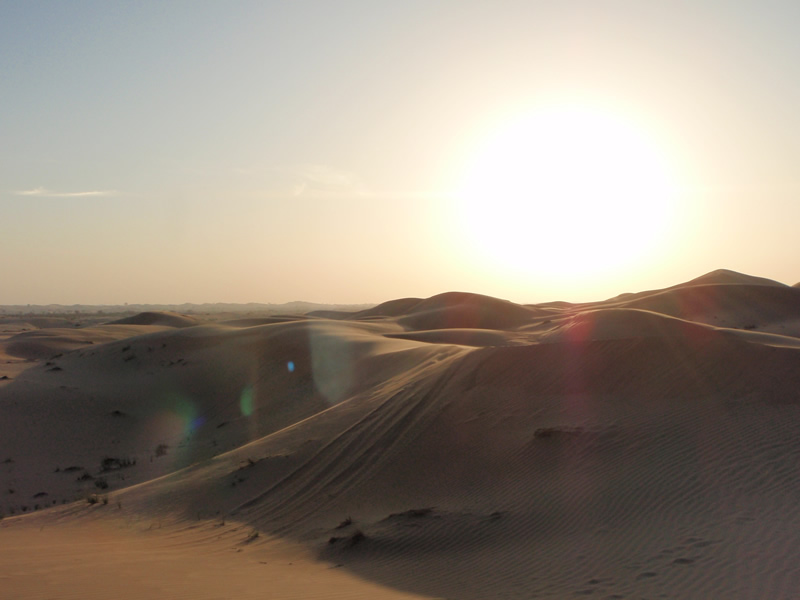
Food options run the gamut, from all of the typical fast food of the Western World to a dizzying array of choices from any corner of the globe you can image. Southeast-Asian and Middle-Eastern food are both in high supply and also, unsurprisingly, very good. The grocery store was extremely well stocked (and not just with bacon in the forbidden room), even carrying several of the items like Envirokidz Koala Krisp and Almond Breeze Almond milk that I had brought from home as part of my pre-race breakfast. And of course, the "real" restaurants are among the very best in the world, with many marquee chefs having been lured with "name your price" type of offers. But the most memorable meal I had followed an evening of "dune-bashing" in a Land Rover (you just need to do it; imagine a roller coaster on sand where you are absolutely convinced that you're going flip but never do) during a "Dinner in the Desert" trip on which I got to meet-and ride-camels, had the opportunity to go sand-boarding (snowboarding on sand-dunes), and got to experience once of the most amazing night skies I've ever seen under a typically-cloudless sky well outside of the city limits in the midst of the still undeveloped desert on the way to El Ain that gives some insight into just how far and how fast this country has changed. For cheap, but really good, food, the local shopping mall food court has a wealth of choices that you are happy to spend time eating while people-watching, an activity that is especially captivating here.
It was a trip of a lifetime. Even at 2400 words (thanks to you, the reader, if you've made it this far), I realize there is still so much that I haven't covered, including the trip to the stunning Sheikh Zayed Mosque, my late-night trip to the indoor shopping center (different than the mall) which really gets going around 9pm since the oppressive heat in summer makes it an almost nocturnal society from a social perspective, the trip to Dubai and the indoor ski-hill at the Mall of the Emirates and to the Atlantis Hotel on Palm Island, and more. And so it is that I find myself returning to the desert, not just for a great race against the best professionals in the world (the 2011 field features nine of the top-10 2010 Kona finishers) but also for a great adventure. I haven't even landed, and yet I'm already looking forward to 2012. However, in the meantime, I've got a race to focus on.


